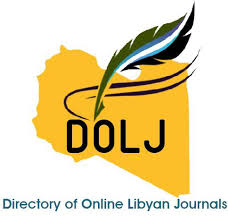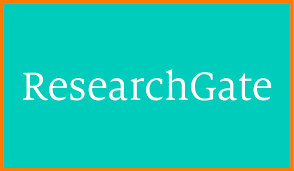Breastfeeding Knowledge Amongst Healthcare Professionals at AlJalaa Maternity Hospital Tripoli-Libya
DOI:
https://doi.org/10.54361/ljmr.v15i2.05Keywords:
breast milk, breastfeeding, health care professional knowledgeAbstract
Breastfeeding support from healthcare professionals influences a mother’s decision to initiate and maintain exclusive breastfeeding. Objectives: To assess the level of knowledge on exclusive breastfeeding (EBF) among healthcare professionals in Aljalaa maternity hospital in Tripoli –Libya. Materials and methods: Across-sectional study was performed between March to April 2021. Study subjects included health professionals working in the Aljalaa maternity hospital. A questionnaire was used to collect data. SPSS 22 package program was used for statistical analysis. Results: A total of 118 health care professionals participated in this study. The majority of the participants52.5% was nurses and midwives, 86.4% were females, with mean age 37.43±9.37 and 82.2% were resident with more than ten years of experience. Health care professionals had adequate knowledge about BF initiation, duration and complementary feed. However, 78.8%% of the providers didn’t know about the frequency of breastfeeding (BF). The majority of the participants knew about breast milk sustainabilitybut,81.4% didn’t know about cracked nipple management. Health care professionals have good information about BF contraindications, the majority75.4% of the provider's answered diarrhea is an indication to stop breastfeeding, and 65.3% answered small breasts affect breastfeeding. The mean score of the professional’s healthcare knowledge was 54.36 ±13. Conclusion: The level of breastfeeding knowledge of health care professionals was fair with deficits in the important key areas. Immediate training and continuing medical education for health workers will help improve mother and newborn health
Downloads
References
American Academy of Pediatrics. Section on breastfeeding. Policy Statement. Breastfeeding and the use of human milk. Pediatrics. 2012; 129: e827-e841.
World Health Organization. Ten steps to successful breastfeeding. WHO /UNICEF statement. Available at: http://www.unicef. Org /newsline/tenstps/htm. Accessed April 12, 2012
C. Boschi-Pinto, C. F. Lanata, and W. Mendoza, Diarrheal diseases, in Disease and Mortality in Sub-Saharan Africa, D. T. Jamison, R. G. Feachem, and M. W. Makgoba, eds., World Bank,
Washington, DC, 2nd ed., 2006
Nankumbi J, Muliira JK. Barriers to Infant and Child-feeding Practices: A Qualitative World Health Organization. Ten steps to successful breastfeeding. WHO/ UNICEF statement. Available at: http://www.unicef. org/newsline/tenstps/htm. Accessed April 12, 2012.Study of Primary Care givers in Rural Uganda. J Health Popul Nutr 2015; 33(1):106-16
Gertosio C, Meazza C, Pagani S, Bozzola M. Breastfeeding and its gamut of benefits. Minerva Pediatr 2016; 68(3):201-12
Schwarz EB, Ray RM, Stuebe AM, Allison MA, Ness RB, Freiberg MS, Cauley JA. Duration of lactation and risk factors for maternal cardiovascular disease. Obstet Gynecol.2009; 113(5):972- 973
Benefits of breastfeeding. Nutr Clin Care 2003; 6(3):125-31
Greiner T. The Concept of Weaning: Definitions and Their Implications. J Hum Lact 1996; 12(2):123-8.
Sellen DW, Smay DB. Relationship between subsistence and age at weaning in “preindustrial” societies. Hum Nat 2001; 12(1):47-87.
World Health Organization (WHO). Complementary feeding: report of the global consultation, and summary of guiding principles for complementary feeding of the breastfed child. World Health Organization. 2002; Available athttps://apps.who.int/iris/handle/10665/42739
U. Uchendu, A. Ikefuna, and I. Emodi, Factors associated with exclusive breastfeeding among mothers seen at the University of Nigeria Teaching Hospital, SAJCH, 3 (2009), 14–19
Bou Diab S and Werle C (2018): What motivates women to breastfeed in Lebanon: an exploratory qualitative analysis, 1(123):23–31.
World Health Organization (WHO). Ten steps to successful breastfeeding. [Accessed 2020 Jun 02]. Available at: http://www.who.int/nutrition/bfhi/ten-steps/en/.
Bharani A, Harshey M, Verma T and Raipurkar S (2017): Effect of structured teaching program on the knowledge and opinion among Indian nursing students regarding breastfeeding Int J Contemp Pediatr., 4(6):2022-26
Joanah M. Ikobah, Offiong Ikpeme, Ogban Omoronyia, Nnette Ekpenyong, Ekong Udoh
Current Knowledge of Breastfeeding Among Health Workers in a Developing Country Setting:
A Survey in Calabar, Nigeria, Cureus 12(9): e10476. DOI 10.7759/cureus.10476
S. N. Okolo and C. Ogbonna, Knowledge, attitude and practice of health workers in Keffi local government hospitals regarding baby friendly hospital initiative (BFHI) practices, Eur J Clin Nutr, 56 (2002), 438–441
E.J. Al-Zwaini, S.J. Al-Haili and T.M. Al-Alousi; Knowledge of Iraqi primary healthcare physicians about breastfeeding Eastern Mediterranean Health Journal, Vol. 14, No. 2, 2008
Maha M Al-Madani, Laila Y Abu-Salem; Health professionals' perspectives on breastfeeding support practices. Saudi Journal of Medicine & Medical Sciences (SJMMS)vol.5 issue 2, 2017. DOI: 10.4103/1658-631X.204875-PMID: 30787768
Ahluwalia IB, Morrow B, Hsia J. Why do women stop breastfeeding? Findings from the pregnancy risk. Assessment and monitoring system. Pediatrics. 2006; 116:1408–12.
American Academy of Pediatrics Section onBreastfeeding. Sample Hospital Breastfeeding Policy for Newborns. Elk Grove Village, IL:American Academy of Pediatrics; 2008
Laura M Lamberti1, Christa L Fischer Walker1, Adi Noiman1, Cesar Victora2, Robert E Black1 Lamberti et al. Breastfeeding and the risk for diarrhea morbidity and mortality BMC Public Health 2011, 11(Suppl 3): S15
World Health Organization; Implementation of the Baby-friendly Hospital Initiative, e-Library of Evidence for Nutrition Actions (eLENA) Available at: https://www.who.int/elena/titles/bbc/implementation_bfhi/en
Somaya Mohamed Abd El-Ghany, Afaf Abdel Wahab Korraa, Eman Almorsy Ahmed, Iman Mohmmad Wahby Salem, Sahar Ahmed Eslam, Amal Aly El-Taweel, and Karin Cadwell,; A Survey of Knowledge, Attitudes, and Practices of Providers and Staff at Al-Zahraa University Hospital Regarding the Baby-Friendly Hospital Initiative and the International Code of Marketing Breast Milk Substitutes. J Perinat Educ. 2019 Oct 1; 28(4): 210–217
Beeken S, Waterston T. Health services support of breast-feeding: are we practising. what we preach? British medical journal, 1992, 305:285–7
Subhash Chandra Shaw, Amit Devgan; Knowledge of breastfeeding practices in doctors and nurses: A questionnaire-based survey. Med J Armed Forces India. 2018 Jul; 74(3): 217–219.
Downloads
Published
Issue
Section
License
Copyright (c) 2021 Najwa A. Fituri, Naima S. Dafer (Author)

This work is licensed under a Creative Commons Attribution-NonCommercial-NoDerivatives 4.0 International License.
Open Access Policy
Libyan journal of medical Research (LJMR).is an open journal, therefore there are no fees required for downloading any publication from the journal website by authors, readers, and institution.
The journal applies the license of CC BY (a Creative Commons Attribution 4.0 International license). This license allows authors to keep ownership f the copyright of their papers. But this license permits any user to download , print out, extract, reuse, archive, and distribute the article, so long as appropriate credit is given to the authors and the source of the work.
The license ensures that the article will be available as widely as possible and that the article can be included in any scientific archive.
Editorial Policy
The publication of an article in a peer reviewed journal is an essential model for Libyan journal of medical Research (LJMR). It is necessary to agree upon standards of expected ethical behavior for all parties involved in the act of publishing: the author, the journal editorial, the peer reviewer and the publisher.
Any manuscript or substantial parts of it, submitted to the journal must not be under consideration by any other journal. In general, the manuscript should not have already been published in any journal or other citable form, although it may have been deposited on a preprint server. Authors are required to ensure that no material submitted as part of a manuscript infringes existing copyrights, or the rights of a third party.
Authorship Policy
The manuscript authorship should be limited to those who have made a significant contribution and intellectual input to the research submitted to the journal, including design, performance, interpretation of the reported study, and writing the manuscript. All those who have made significant contributions should be listed as co-authors.
Others who have participated in certain substantive aspects of the manuscript but without intellectual input should only be recognized in the acknowledgements section of the manuscript. Also, one of the authors should be selected as the corresponding author to communicate with the journal and approve the final version of the manuscript for publication in the LJMR.
Peer-review Policy
- All the manuscripts submitted to LJMR will be subjected to the double-blinded peer-review process;
- The manuscript will be reviewed by two suitable experts in the respective subject area.
- Reports of all the reviewers will be considered while deciding on acceptance/revision or rejection of a manuscript.
- Editor-In-Chief will make the final decision, based on the reviewer’s comments.
- Editor-In-Chief can ask one or more advisory board members for their suggestions upon a manuscript, before making the final decision.
- Associate editor and review editors provide administrative support to maintain the integrity of the peer-review process.
- In case, authors challenge the editor’s negative decision with suitable arguments, the manuscript can be sent to one more reviewer and the final decision will be made based upon his recommendations.














